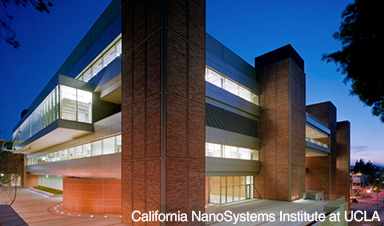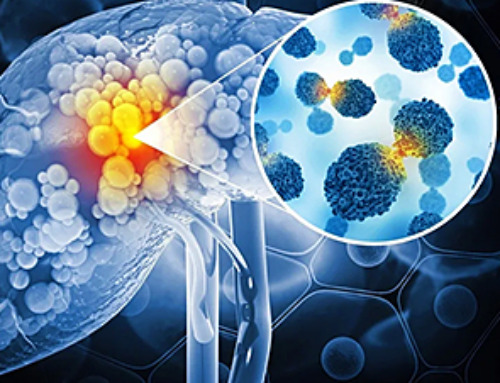For about one in 13 children in the U.S., normally harmless foodstuffs such as milk, eggs and peanuts can send the body’s natural defenses into overdrive.
Symptoms of food allergies can vary widely, but at worst, a systemwide allergic response can lead to anaphylaxis, a life-threatening condition characterized by a sudden drop in blood pressure and difficulty breathing.
Although there are now some preventive measures for food-induced anaphylaxis, there are not yet any long-lasting solutions—treatments capable of locking the immune system into a state of tolerance, so that it doesn’t respond to allergens.
Now, a UCLA research team has developed a possible way to impart long-term relief from allergies by inducing an active state of immune tolerance.
The technology uses a nanoparticle—a particle so small that it’s measured on the scale of billionths of a meter—to deliver proteins to specific cells in the liver. Those proteins may trigger an allergic response in other organs in the body, but in the liver, they cause the targeted cells to activate a tolerant immune response that switches the allergic response off.
A report on the research, published in ACS Nano, indicates that the platform is effective in preventing allergic reactions to an egg protein when ingested or inhaled. The UCLA researchers also showed that delivering a single piece of a protein that triggers allergies is sufficient to ameliorate the allergic reaction.
“Huge numbers of people suffer from food allergies, amounting to billions of dollars in annual health care costs,” said co-corresponding author Dr. André Nel, director of the University of California’s Center for Environmental Implications of Nanotechnology, or CEIN, and director of research at the California NanoSystems Institute at UCLA. “Normally, asthma and anaphylaxis are treated with an EpiPen syringe as well as anti-inflammatory and immune-suppressive drugs that only provide transient relief. For the problem to go away long-term, we’re looking at the liver to reprogram the immune system to an actively sustained state of nonresponsiveness.”
The liver is an immune-privileged organ, meaning that it is programmed not to respond to foreign proteins called antigens, which can cause allergic or anaphylactic responses elsewhere in the body. The platform developed by Nel and his colleagues spurs the liver to produce regulatory T cells, cells in the immune system that can go everywhere in the body, to calm allergic responses to food allergens.
Image Credit: University of California, Los Angeles
Post by Amanda Scott, NA CEO. Follow her on twitter @tantriclens
Thanks to Heinz V. Hoenen. Follow him on twitter: @HeinzVHoenen
News
Scientists Find a Way to Help the Brain Clear Alzheimer’s Plaques Naturally
Scientists have discovered that the brain may have a built-in way to fight Alzheimer’s. By activating a protein called Sox9, researchers were able to switch on star-shaped brain cells known as astrocytes and turn them into [...]
Vision can be rebooted in adults with amblyopia, study suggests
Temporarily anesthetizing the retina briefly reverts the activity of the visual system to that observed in early development and enables growth of responses to the amblyopic eye, new research shows. In the common vision [...]
Ultrasound-activated Nanoparticles Kill Liver Cancer and Activate Immune System
A new ultrasound-guided nanotherapy wipes out liver tumors while training the immune system to keep them from coming back. The study, published in Nano Today, introduces a biodegradable nanoparticle system that combines sonodynamic therapy and cell [...]
Magnetic nanoparticles that successfully navigate complex blood vessels may be ready for clinical trials
Every year, 12 million people worldwide suffer a stroke; many die or are permanently impaired. Currently, drugs are administered to dissolve the thrombus that blocks the blood vessel. These drugs spread throughout the entire [...]
Reviving Exhausted T Cells Sparks Powerful Cancer Tumor Elimination
Scientists have discovered how tumors secretly drain the energy from T cells—the immune system’s main cancer fighters—and how blocking that process can bring them back to life. The team found that cancer cells use [...]
Very low LDL-cholesterol correlates to fewer heart problems after stroke
Brigham and Women's Hospital's TIMI Study Group reports that in patients with prior ischemic stroke, very low achieved LDL-cholesterol correlated with fewer major adverse cardiovascular events and fewer recurrent strokes, without an apparent increase [...]
“Great Unified Microscope” Reveals Hidden Micro and Nano Worlds Inside Living Cells
University of Tokyo researchers have created a powerful new microscope that captures both forward- and back-scattered light at once, letting scientists see everything from large cell structures to tiny nanoscale particles in a single shot. Researchers [...]
Breakthrough Alzheimer’s Drug Has a Hidden Problem
Researchers in Japan found that although the Alzheimer’s drug lecanemab successfully removes amyloid plaques from the brain, it does not restore the brain’s waste-clearing system within the first few months of treatment. The study suggests that [...]
Concerning New Research Reveals Colon Cancer Is Skyrocketing in Adults Under 50
Colorectal cancer is striking younger adults at alarming rates, driven by lifestyle and genetic factors. Colorectal cancer (CRC) develops when abnormal cells grow uncontrollably in the colon or rectum, forming tumors that can eventually [...]
Scientists Discover a Natural, Non-Addictive Way To Block Pain That Could Replace Opioids
Scientists have discovered that the body can naturally dull pain through its own localized “benzodiazepine-like” peptides. A groundbreaking study led by a University of Leeds scientist has unveiled new insights into how the body manages pain, [...]
GLP-1 Drugs Like Ozempic Work, but New Research Reveals a Major Catch
Three new Cochrane reviews find evidence that GLP-1 drugs lead to clinically meaningful weight loss, though industry-funded studies raise concerns. Three new reviews from Cochrane have found that GLP-1 medications can lead to significant [...]
How a Palm-Sized Laser Could Change Medicine and Manufacturing
Researchers have developed an innovative and versatile system designed for a new generation of short-pulse lasers. Lasers that produce extremely short bursts of light are known for their remarkable precision, making them indispensable tools [...]
New nanoparticles stimulate the immune system to attack ovarian tumors
Cancer immunotherapy, which uses drugs that stimulate the body’s immune cells to attack tumors, is a promising approach to treating many types of cancer. However, it doesn’t work well for some tumors, including ovarian [...]
New Drug Kills Cancer 20,000x More Effectively With No Detectable Side Effects
By restructuring a common chemotherapy drug, scientists increased its potency by 20,000 times. In a significant step forward for cancer therapy, researchers at Northwestern University have redesigned the molecular structure of a well-known chemotherapy drug, greatly [...]
Lipid nanoparticles discovered that can deliver mRNA directly into heart muscle cells
Cardiovascular disease continues to be the leading cause of death worldwide. But advances in heart-failure therapeutics have stalled, largely due to the difficulty of delivering treatments at the cellular level. Now, a UC Berkeley-led [...]
The basic mechanisms of visual attention emerged over 500 million years ago, study suggests
The brain does not need its sophisticated cortex to interpret the visual world. A new study published in PLOS Biology demonstrates that a much older structure, the superior colliculus, contains the necessary circuitry to perform the [...]





















